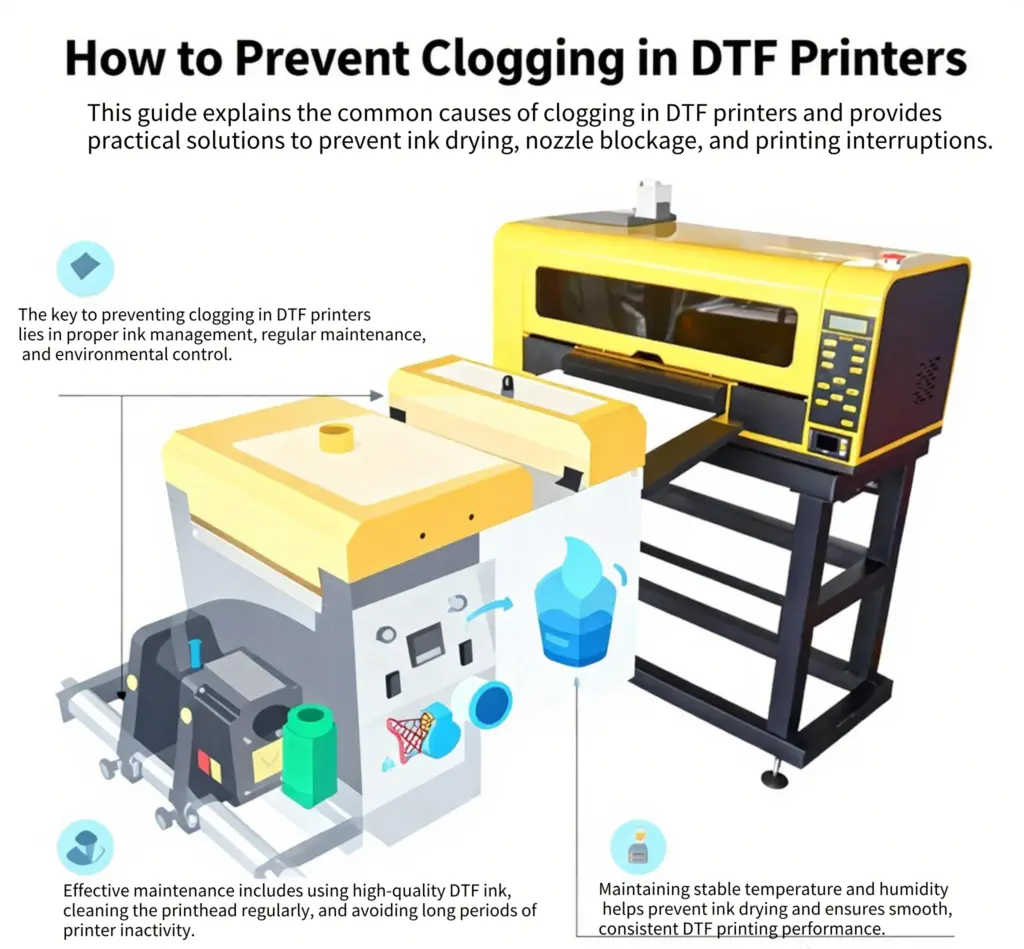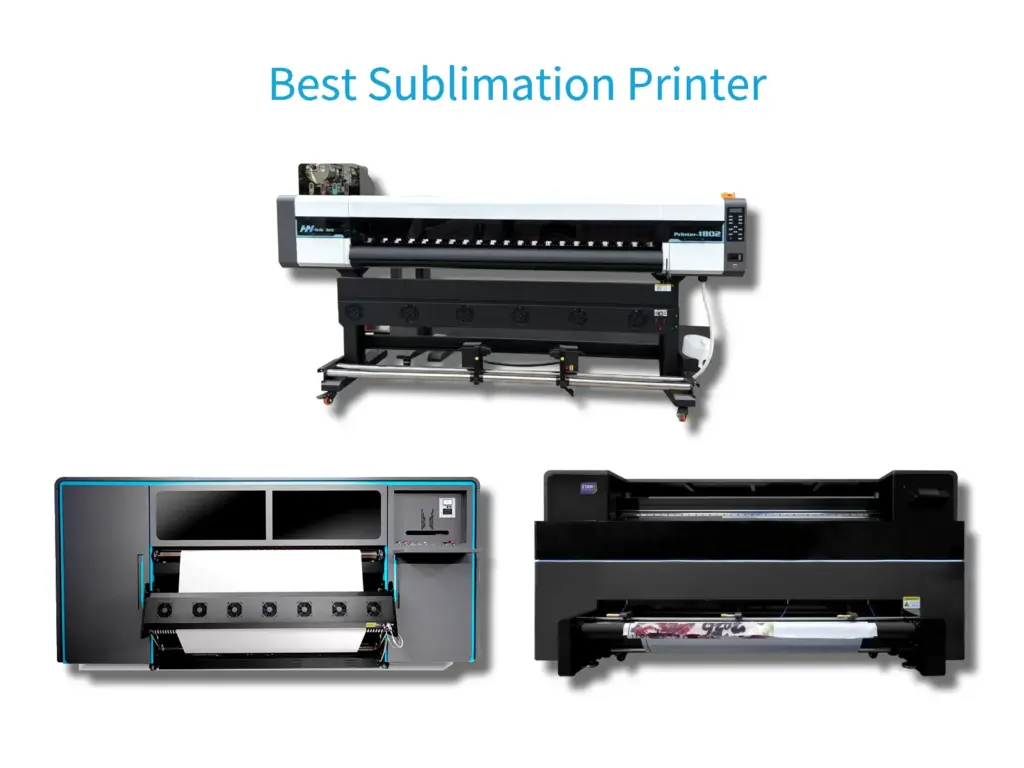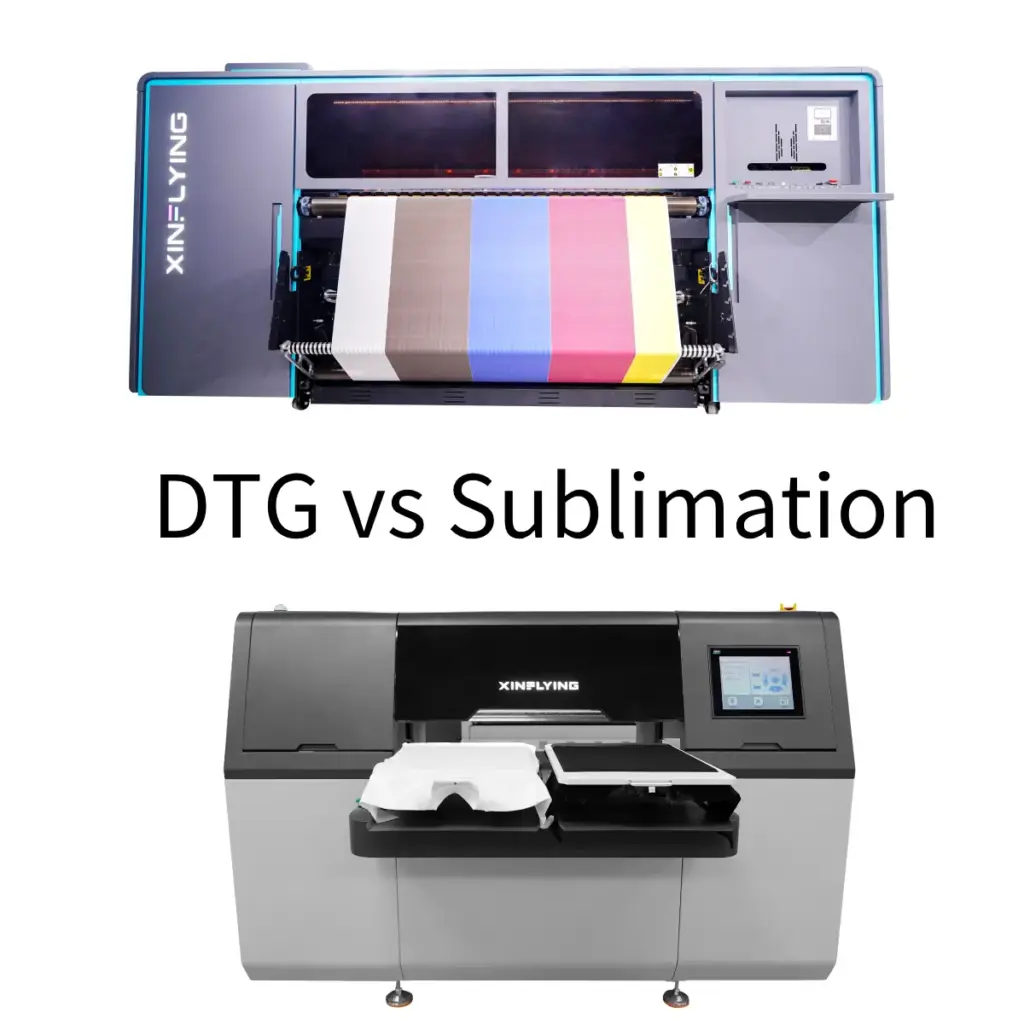Druk UV DTF to najnowocześniejsza technologia, która rewolucjonizuje branżę druku cyfrowego. Oferuje wysokiej jakości wydruki o żywych kolorach i wyjątkowych szczegółach, co czyni go popularnym wyborem do różnych zastosowań. W tym przewodniku, poznamy podstawy druku UV DTF, jego zalety i wady, potrzebny sprzęt, i proces krok po kroku. Dodatkowo, zagłębimy się w kilka wskazówek i najlepszych praktyk pozwalających osiągnąć optymalne rezultaty oraz omówimy szeroką gamę zastosowań druku UV DTF
Co to jest druk UV DTF

Druk UV DTF, znany również jako druk UV bezpośrednio na folii, to technika druku cyfrowego, która wykorzystuje atramenty utwardzane promieniami UV do bezpośredniego drukowania projektów na specjalistycznej folii transferowej. Ten film, pokryty warstwą rozdzielającą, pozwala na łatwe przeniesienie projektu na szeroką gamę materiałów, w tym tekstylia, drewno, szkło, i metale.
Tym, co odróżnia druk UV DTF od tradycyjnych metod drukowania, jest jego zdolność do tworzenia wydruków o wyjątkowych szczegółach i żywych kolorach. W przeciwieństwie do innych metod nakładania warstw atramentu na materiał, Druk UV DTF wnika w powierzchnię, co daje trwalszy i trwalszy wydruk. Tusze utwardzane promieniowaniem UV stosowane w tym procesie utwardzają się natychmiast po wystawieniu na działanie światła ultrafioletowego, tworząc silne połączenie z podłożem.
UV DTF vs DTF


Kluczowa różnica między UV DTF i DTF (Bezpośrednio do filmu) druk leży w atramenty i procesy utwardzania używany.
W Druk UV DTF, Stosowane są tusze utwardzane promieniami UV, które utwardzają się natychmiast pod wpływem światła ultrafioletowego. Ten proces utwardzania zapewnia doskonałą trwałość, żywe kolory, oraz odporność na blaknięcie i ścieranie. Druk UV DTF pozwala na druk na różnych materiałach i zapewnia szybszy czas produkcji w porównaniu do DTF.
Z drugiej strony, Druk DTF wykorzystuje atramenty na bazie wody, które wymagają ciepła i ciśnienia do przeniesienia. Projekt jest drukowany na folii, który następnie przenosi się na podłoże. Druk DTF zapewnia również żywe kolory, ale może nie zapewniać takiego samego poziomu trwałości jak wydruki UV DTF.
Ogólnie, Druk UV DTF zapewnia wyższą trwałość i krótszy czas produkcji, natomiast druk DTF może być opłacalną opcją w przypadku operacji na mniejszą skalę. Wybór między nimi zależy od takich czynników, jak pożądana jakość druku, wymagania dotyczące trwałości, i rozważania budżetowe.
Plusy i minusy druku UV DTF

Zalety drukowania UV DTF
- Wysoka jakość druku i żywe kolory: Druk UV DTF zapewnia wyjątkową jakość druku z wyraźnymi szczegółami i żywymi kolorami. Atramenty utwardzane promieniowaniem UV stosowane w tym procesie mają szerszą gamę kolorów, co pozwala na dokładne odwzorowanie kolorów.
- Wszechstronność w druku na różnych materiałach: Druk UV DTF można zastosować na szerokiej gamie materiałów, w tym tkaniny, tworzywa sztuczne, ceramika, i metale. Jest to wszechstronna technika druku, która otwiera nieograniczone możliwości personalizacji.
- Krótszy czas produkcji w porównaniu do innych metod: Druk UV DTF znany jest z szybkiego czasu produkcji. Atramenty utwardzane promieniowaniem UV schną natychmiast po wystawieniu na działanie światła ultrafioletowego, eliminując potrzebę suszenia i umożliwiając szybką realizację.
Wady druku UV DTF
- Czynniki kosztowe i inwestycja początkowa: Druk UV DTF wymaga specjalistycznego sprzętu, łącznie z drukarką UV DTF, Atramenty utwardzane promieniami UV, i powłoki. Początkowa inwestycja może być wysoka, czyniąc go mniej dostępnym dla małych przedsiębiorstw.
- Ograniczenia w drukowaniu drobnych szczegółów i gradientów: Druk UV DTF oferuje wyjątkową szczegółowość, może mieć ograniczenia, jeśli chodzi o drukowanie drobnych szczegółów i gradientów. Grubość atramentów utwardzanych promieniami UV może wpływać na gładkość gradientów, wymagające dodatkowych technik w celu osiągnięcia pożądanych rezultatów.
- Wymaga specjalistycznego sprzętu i wiedzy: Obsługa drukarki UV DTF wymaga specjalistycznej wiedzy i doświadczenia. Właściwa konserwacja i kalibracja są niezbędne do zapewnienia stałej jakości druku. Dodatkowo, zrozumienie oprogramowania RIP i zarządzania kolorami ma kluczowe znaczenie dla uzyskania dokładnego odwzorowania kolorów.
Czego potrzebuję do drukowania UV DTF
Aby rozpocząć przygodę z drukiem UV DTF, będziesz potrzebować następującego sprzętu i materiałów:
Drukarka UV DTF
Ta specjalistyczna drukarka jest przeznaczona do obsługi atramentów utwardzanych promieniowaniem UV stosowanych w procesie druku DTF. Wyposażona jest w zaawansowane funkcje umożliwiające precyzyjny druk i utwardzanie promieniami UV.
Farby i powłoki utwardzane promieniami UV
Atramenty utwardzane promieniowaniem UV zostały specjalnie opracowane tak, aby utwardzać się natychmiast po wystawieniu na działanie światła ultrafioletowego. Atramenty te oferują żywe kolory i doskonałą przyczepność do różnych podłoży. W celu zwiększenia trwałości i wykończenia wydruków stosowane są powłoki UV.
UV DTF Folia transferowa i papier zwalniający
Folia transferowa UV DTF pełni rolę nośnika wzoru w procesie druku. Pokryty jest warstwą rozdzielającą, która umożliwia łatwe przeniesienie wzoru na wybrane podłoże. Papier zwalniający służy do ochrony zadrukowanej folii transferowej UV DTF podczas przechowywania i transportu.
Laminator
Do przeniesienia zadrukowanego projektu z folii transferowej UV DTF na żądane podłoże służy maszyna do laminowania. Zapewnia odpowiednią przyczepność i eliminuje pęcherze powietrza, co zapewnia bezproblemowy transfer.
Proces druku UV DTF krok po kroku
- Zaprojektuj za pomocą programu RIP na komputerze i umieść klejącą stronę folii UV DTF A na platformie drukarki UV DTF.
- Napełnij wkład atramentem CMYK, biały atrament, i lakier do nadruku Twojego projektu na folii UV DTF A.
- Użyj laminarki wraz z drukarką UV DTF, aby przenieść wzór na folię B.
- Odklej folię A z wzorem i przyklej ją do przedmiotu, który chcesz wydrukować. Następnie powoli zdejmij folię B, i Twój produkt jest gotowy.
Wskazówki i najlepsze praktyki dotyczące druku UV DTF

Aby zapewnić najlepsze możliwe rezultaty i zoptymalizować drukowanie UV DTF, rozważ wdrożenie poniższych wskazówek i najlepszych praktyk:
Wybór odpowiedniego podłoża w celu uzyskania optymalnych rezultatów
Wybór odpowiedniego podłoża ma kluczowe znaczenie dla uzyskania optymalnej jakości druku. Różne materiały mają różne właściwości powierzchni i kompatybilność z drukiem UV DTF. Eksperymentuj z różnymi podłożami, aby znaleźć takie, które zapewniają najlepsze rezultaty w przypadku konkretnych projektów. Weź pod uwagę takie czynniki, jak tekstura, wchłanianie, i kolor, aby zapewnić pożądany efekt.
Prawidłowa konserwacja i pielęgnacja drukarki UV DTF
Regularna konserwacja i pielęgnacja mają kluczowe znaczenie dla trwałości i wydajności drukarki UV DTF. Postępuj zgodnie z Producent drukarki tkaninwytyczne dotyczące procedur czyszczenia, konserwacja zapobiegawcza, i kalibracja. Trzymaj drukarkę w czystym i wolnym od kurzu środowisku, aby uniknąć zanieczyszczeń, które mogłyby mieć wpływ na jakość druku.
Testowanie i eksperymentowanie z różnymi ustawieniami i technikami
Druk UV DTF oferuje szereg opcji i efektów dostosowywania. Poświęć trochę czasu na eksperymentowanie z różnymi ustawieniami, takie jak gęstość atramentu, czasy utwardzania, i rozdzielczości druku. Przetestuj różne techniki, aby uzyskać pożądane wykończenie, gradienty, i tekstury. Zapisuj swoje ustawienia i wyniki do wykorzystania w przyszłości.
Opcje przetwarzania końcowego i wykańczania zwiększające trwałość
Rozważ opcje przetwarzania końcowego i wykańczania, aby zwiększyć trwałość i estetykę wydruków UV DTF. Nałożenie powłoki ochronnej lub lakieru może poprawić odporność na ścieranie, Blaknięcie UV, i narażenie chemiczne. W zależności od podłoża, możesz także wypróbować dodatkowe techniki, takie jak prasowanie na gorąco lub haftowanie, aby dodać wymiar i teksturę swoim wydrukom.
Optymalizacja oprogramowania RIP i zarządzania kolorami
Oprogramowanie RIP odgrywa kluczową rolę w zarządzaniu kolorami i dokładności druku. Upewnij się, że oprogramowanie RIP jest skalibrowane i profile są prawidłowo skonfigurowane. Użyj próbek kolorów i spektrofotometrów, aby sprawdzić dokładność i spójność kolorów. Regularnie aktualizuj swoje oprogramowanie, aby korzystać z najnowszych funkcji i ulepszeń.
Zastosowanie druku UV DTF

Druk UV DTF znajduje zastosowanie w różnych gałęziach przemysłu ze względu na swoją wszechstronność i wysoką jakość wyników. Niektóre typowe aplikacje obejmują:
- Przemysł odzieżowy i odzieżowy: Druk UV DTF jest szeroko stosowany do nadruku na koszulkach, bluzy, i inne elementy z tkaniny. Oferuje możliwość drukowania żywych projektów z wyjątkową szczegółowością, co czyni go popularnym wyborem do dostosowywania.
- Wystrój domu i personalizacja: W branży wyposażenia wnętrz, Druk UV DTF pozwala na personalizację tekstyliów domowych, poduszki, i wydruki na płótnie. Oferuje nieograniczone możliwości personalizacji projektów i tworzenia niepowtarzalnych elementów dekoracyjnych.
- Materiały promocyjne i marketingowe: Druk UV DTF to doskonały wybór do tworzenia przyciągających wzrok banerów, plakaty, i przedmioty promocyjne. Żywe kolory i wysoka jakość druku wyróżniają te projekty, pozostawiając trwałe wrażenie na potencjalnych klientach.
- Zastosowania przemysłowe i komercyjne: Druk UV DTF można stosować na sztywnych materiałach, takich jak drewno, szkło, i metale. Otwiera możliwości dostosowywania w sektorach przemysłowym i handlowym, łącznie z oznakowaniem, etykietowanie, i dekoracja produktu.
Wniosek
Druk UV DTF zmienia zasady gry w branży druku cyfrowego, oferując wysokiej jakości wydruki o żywych kolorach i wyjątkowych szczegółach. Jej wszechstronność w druku na różnych materiałach, w połączeniu z szybszym czasem produkcji, sprawia, że jest to atrakcyjna opcja zarówno dla firm, jak i osób prywatnych. Z odpowiednim sprzętem, przybory, i ekspertyza, Druk UV DTF stwarza nieograniczone możliwości personalizacji i kreatywności. Wykorzystaj tę technologię i odkryj jej nieograniczony potencjał w świecie druku cyfrowego.







